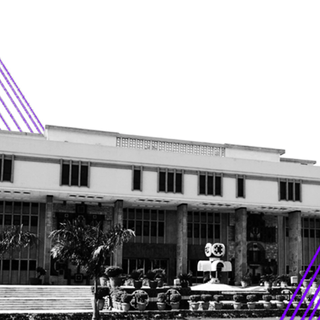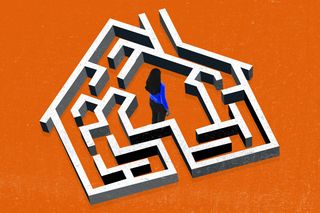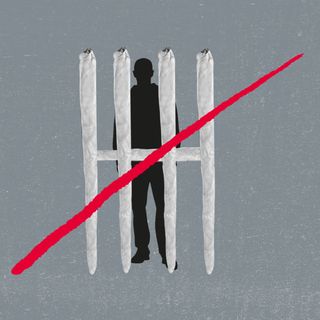
How India’s Infrastructure Is Ill‑Equipped To Help Domestic Violence Survivors Escape Their Marital Homes
A dearth of shelters and a lack of robust first response measures means that escaping survivors are likely to be caught by their abusers.

“I was lucky because I had the financial means to take myself and my daughters out of the state. I also knew where to go. If I didn’t, I wouldn’t be here today,” says A*, 59.
For a domestic violence survivor, the act of leaving the house often starts before they ever walk out the door, and so too do the barriers keeping them from leaving.
A checklist of things one needs before escape includes identification documents, liquid cash, a mobile phone, access to transportation, any valuable possessions and, if children are involved, their documents, clothes, and access to finances to support themselves and their children. For many survivors, however, almost none of these are within reach.
Abusers tend to keep each of these possessions in their custody, leaving women with little to no agency to leave. “It is scary how much abusers plan to keep women from leaving,” says Meena C, from International Foundation for Crime Prevention and Victim Care (PCVC).
As a result, many survivors tend to leave without most of these things. But the trouble continues the moment they are outside: Where do they go? How? How far can they afford it? If it is at the dead of the night, can they rely on public transport to keep them safe?
“There is no shelter home that you can go to with confidence that you will be accepted and kept safe,” A says.
There is also a larger, systemic information gap at play, about the location and availability of either private shelters or state-run One Stop Centers and Swadhar Grehs — emergency and long-stay shelter homes mandated by the Domestic Violence Act, respectively. “Even if you know and make a call, how do you know what to ask them? What to expect of them? That level of not delivering information even for a woman on the run, right up to systemic apathy, victim-blaming, and shaming language, shows the broader gaps in the larger system,” says Kirthi Jayakumar, developer of the Saahas mobile app for survivor advocacy.
Assuming, somehow, that these barriers are also surpassed.
A survivor reaches a shelter home. What then? It depends on which shelter home: sometimes, not knowing about the nearest domestic violence shelter home, survivors end up at orphanages or old-age homes that can turn them away. Even when they do find the right place, they can be denied admission based on a lack of documentation, a bureaucratic hurdle that can leave women stranded with nowhere to go.
During the pandemic, this particular aspect of the situation worsened, as shelter homes began requiring Covid19 tests from specific government hospitals.
“We were already looking at minimal spaces for survivors,” says Jayakumar. “The few [government] shelters that exist are not necessarily staffed by people who have the empathy, the training, or even just the verbal capacity to receive a survivor.” The “counseling” that women receive is often along the lines of: “who will he hit, if not you?” In her experience, private shelters are the first point of reference for assisting survivors in need. They tend to have the wherewithal to handle survivors with sensitivity, despite the hour.
***
“[W]hen you seek help, what is out there? The government services often don’t even pick up the phone,” notes Swarna Rajagopalan, founder of Prajnya Trust. State helplines directing calls to the police don’t help, because of the lack of trust in the police.
Even in the absence of all other options, the police is one option that few survivors opt for. This is because they counsel the complainants to go back and “adjust,” rather than holding the accused accountable.
“I have never seen a case where the first responder was the police and the survivor received any help,” says Monika Tiwary from Shakti Shalini, a Delhi-based shelter for domestic violence survivors. The police work under the patriarchal mindset of “don’t break the home,” she notes.
Related on The Swaddle:
Know Your Rights: Navigating Domestic Violence Laws in India
She recalls how, in one case, there was a threat to the survivor’s life; upon calling the police, they were asked why they were removing her from her home. “What could be a safer place than the home?” they asked. “We don’t know what imaginary home they were talking about,” Tiwari says.
State agencies often don’t understand how important it is to leave immediately. “We get complaints that we’re doing something wrong, that we’re homewreckers. There is a lot of pressure to reunite families,” she adds.
A, who now volunteers at Aks Foundation, talks of the main problem here: “[T]hey just don’t respect women,” she says, recalling two incidents when people she knew were turned away by the police, who didn’t like to “interfere” between the husband and wife. “But the police is the only thing men will be afraid of. Still, there is no support from the government,” she adds.
“Follow-ups are important too. Sometimes the police think one warning is enough, but they don’t know that it makes the husband very angry and retaliate.”
Instead, it is the abuser and their family whom the police take more seriously, and act on behalf of to find a missing wife. This is not allowed, as per the Domestic Violence Act, which obliges the police to inform survivors of their rights and entitlements.
The implications of the police being a hostile or untrustworthy entity are enormous. Often, it means that survivors don’t have access to the law or justice if they cannot feel safe approaching the space to make a complaint.
“Survivors can’t lodge complaints due to family pressures, and the police hesitate to file an FIR too. This could also cause an increase in violence… the enforcement system that we have makes it very difficult for women to take action against domestic violence,” says Mansi Chaudhari, from Pink Legal India.
“I had no intention of doing anything legal. He is a madman. I thought, let a sleeping tiger sleep,” A says, about her decision to not pursue a formal complaint.
***
Survivors wait with bated breath for a chance to leave. But they are stalled in their one chance at an escape when government shelters ask whether their arrival is police or court-mandated, even though there is no legal compulsion to seek permission from state authorities before approaching a shelter home. The difficulty in accessing any support or justice system makes such permissions next to impossible.
Due to the lack of public infrastructure that is equipped to handle the volume and nature of such cases, many survivors become destitute.
“Women sometimes call from public places. Last year a pregnant woman called us from the railway station. One woman a few years ago stayed on the railway station platform for many months with 3 young children in tow,” Tiwari recalls.
The Domestic Violence Act also mandates state-appointed Protection Officers for every district, whose job it is to respond to women in distress with adequate resources and information. But several of these positions across districts in the country remain vacant, and the ones that are not are sometimes occupied by people without the right training.
As a result, even shelters and their personnel who are meant to accommodate survivors fleeing violence are in a bad position to do so. Soon, survivors come to realize the difference between a space for safety from violence and a truly safe space. When many traumatized people are sheltered together without informed support or care, things are bound to go wrong. But the added stigma of mental illness means that either several women go without receiving the urgent care they need, or they are turned away at the very outset if they appear to have mental illnesses.
A’s eldest daughter went into a deep depression soon after leaving. It wasn’t until two years later that A was able to get her the help she needed. But all this was on account of A’s initiative, with no external help or support. But in the immediate aftermath of leaving, A confessed to being dependent on her daughters for decisions. “Your mind is so shattered. I was just existing. Whatever I did, I did it for my daughters.”
It is no surprise then that once a survivor is out there, there is hardly any place that is likely to recognize signs of domestic violence and call for help. But there are some exceptions, according to Meena: the burns unit of hospitals.
***
A 2016 study found a gendered pattern in burn injuries in India, with domestic violence featuring as a key factor. Numbers from the Kilpauk Medical College’s burns unit from the same year are sobering: over 3,000 patients were admitted, with ninety percent admitting to self-immolation as a result of domestic violence.
In a typical burn ward, however, there is not much that medical staff can do. Often families show up to keep a close eye on the survivor under the guise of care, leaving no opportunity for complaint or even conversation. It is at this critical juncture that some NGOs step in to train nurses — the group that has the closest access to survivors at this stage — on how to respond in situations where they suspect violence. Rajagopalan says that in addition to nurses, they also work with beauticians to do similar work since these are the people who come into close contact with survivors in private, intimate spaces. In rural areas, women’s self-help groups serve a similar purpose.
“The underlying factor is that there is no political will… Violence is a public health issue. But many people only look at it in physical terms before taking it seriously,” says Aasha Ramesh, a gender and development consultant. Survivors are hardly ever recognized as such if they don’t “look” like a victim of domestic violence. Although “mental torture” is recognized as a valid aspect of domestic violence under the law, even shelters sometimes hesitate to admit women with no outward injuries. But even with outward injuries, if they are grievous enough, women have been turned away and asked to go to hospitals.
This speaks to the presence of a parallel, informal network of support in the absence of robust state support. Indeed, it is with issues like domestic violence that the imaginary divide between the “public” and the “private” collapses on itself due to how both domains operate under the same logic: to push women into a place of very little control and agency.
Related on The Swaddle:
“One of the things that has happened over the years is community support… I’ve seen many instances of neighbors opening up their houses to give them space,” says Jayakumar. But this is not far-reaching, she notes, due to all the different privileges (or lack thereof) that come into play. Nevertheless, there is more hope in the community rather than public space, social security, or infrastructure, she says, because it is communities whom survivors often rely upon for support more than anything else.
“I was just happy to finally breathe. I got the help I needed in time, from friends and acquaintances. On my own, it would have been very different. Helping hand was in terms of kindness, accommodating us in houses, giving us space to think ahead,” explains A.
Public institutions — whether they are hospitals, transport, financial agencies — are not equipped to understand, much less assist, survivors of domestic violence who take the extraordinarily difficult step to leave. This leads survivors to places that are not meant for supporting them, such as railway stations, temples, or churches with just the clothes on their backs, and no concrete options. Instead of care and support, the state’s response to almost any gendered issue is often surveillance. How the police respond, furthermore, is evidence of the same patriarchal logic at play even outside the home: adjust, and be a “good” wife.
State shelter homes are not immune from this kind of moralizing either: if children are left behind, mothers face enormous judgment and shame for being “bad” mothers, according to Meena.
What is left unsaid is that sometimes, women may leave without their children to find a way to support them first. But this doesn’t always pan out the way it was intended, as abusers can sometimes start to threaten the children while blackmailing survivors to return.
Moreover, their strict requirement for documentation to “verify” someone’s “social background” is also a process of vetting someone as a “genuine victim” or not. “Sometimes, for example, women who are engaged in activities such as prostitution are brought in,” one manager of an NGO told The Hindu. This bureaucratic hurdle precludes the assumption that “genuine” survivors have access to ID proof, despite it being well established that, often, abusers prevent this very access.
The current government’s dogged insistence on centralization is a nightmare for survivors of violence. In a system where not having an Aadhar card in hand makes everyday life impossible, it is virtually a death sentence for survivors who escape abusive homes.
“There is state support, but it’s what men think women need. There will be a building, but it’s not our problem how you will get there, what you will find there, what will happen to you after you reach it. It’s just there to show in budgets and elections,” she adds.
A look at the budget allocated to the Women and Children Development Ministry shows how an overwhelming portion goes into children’s schemes. Aasha Ramesh notes that even the very fact that women and children are clubbed together shows that women are still viewed in their capacity as mothers, caregivers, and hapless victims. The protectionism at play safeguards “family values” over an individual’s health and safety.
We may not be seeing a paradigm shift in responses to violence anytime soon, simply because the violence is often within us and the very spaces we occupy.
But there is some hope yet. Meena points to holistic ecosystems in some areas, where NGOs are located adjacent to hospitals such that regular communication and training ensure that survivors of violence are identified and provided with exits more often.
This seems minuscule, compared to the magnitude of the problem. But, as Swarna Rajagopalan points out: “The kind of work we do is termite work, until the building falls you won’t know we’re doing it.”
*Name concealed to protect identity.
Domestic Violence Helpline Numbers:
PCVC: 1800 102 7282 (24 hours toll-free helpline)
Aks Foundation: 8793088814 (crisis line); 8793088815 (legal line)
Shakti Shalini: 011-24373737; 9654462722 (call/WhatsApp); 7838957810 (call/WhatsApp)
Saahas survivor support resource: https://www.saahas.space/
Rohitha Naraharisetty is a Senior Associate Editor at The Swaddle. She writes about the intersection of gender, caste, social movements, and pop culture. She can be found on Instagram at @rohitha_97 or on Twitter at @romimacaronii.
Related


National Science Test Cannot Be In Hindi, English Alone, To Be Postponed: Madras HC
